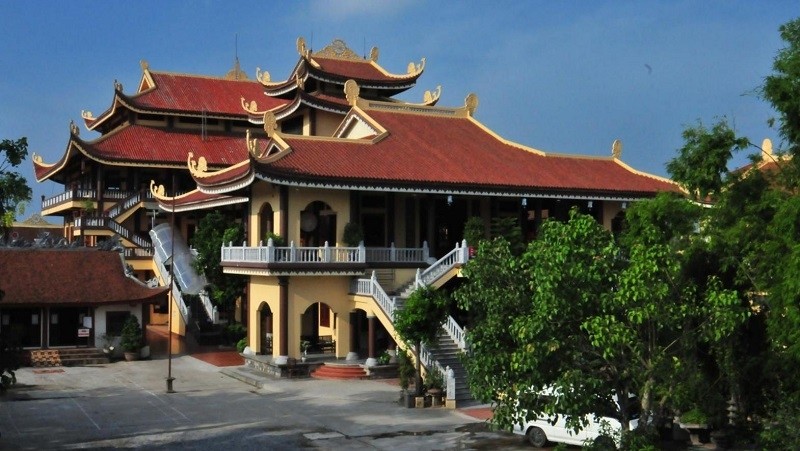The Tran Dynasty emperor was born in 1258 and passed away in 1308, both in the 11th lunar month. Currently, at the Dragon House on the foundation of the former Kinh Thien Palace at the Thang Long Imperial Citadel, an exhibition is taking place with the theme “From the Imperial Palace of Thang Long to the Holy Site of Truc Lam - An Emperor’s Journey to Become a Buddha”, featuring more than 100 artefacts and photos aiming to recreate the life of Emperor Tran Nhan Tong.
He was born as Tran Kham in Thang Long (president-day Hanoi) and spent most of his life in this land until he took off the imperial robe and put on a kasaya robe and founded the Truc Lam Zen school. Not only Tran Nhan Tong, the early emperors of the Tran Dynasty were also influenced by Buddhism and applied the Buddhist philosophy to national governance.
That is why Buddhist-influenced decorative patterns were immensely popular in imperial architecture at Thang Long. The exhibition features unique archaeological items, notably the sculptures of dragons inside a bodhi leaf made of baked clay and unearthed during excavations at the Thang Long Imperial Citadel. The sculptures are not as elaborate as those of the Ly Dynasty but exude the strength of the Tran Dynasty.
The Tran Dynasty continued to reuse several palaces built under the Ly Dynasty, such as the Thien An Palace for the audience between the emperor and the mandarins, while reinforcing the outermost citadel and building new palaces such as Thanh Tu for the retired emperors and Quan Trieu for incumbent emperors.
Inside the Imperial Palace, there are many Buddhist temples such as Tu Phuc, Chan Giao and Dien Huu, of which Tu Phuc is where the relics of Emperor Tran Nhan Tong were kept. The traces of Tu Phuc and Chan Giao Temples have yet to be found but excavations have exposed many vestiges of important structures from the Tran Dynasty.
As different layers of architecture cascaded on one another, in addition to recreating the floor plan of the Thang Long Imperial Palace through different periods, researchers have suggested recreating the floor plan of the Tran Dynasty based on the traces of uncovered structures so that the public could gain a better understanding of the imperial palace during the Tran Dynasty - a golden age of the nation.
The items on display and an accompanying workshop will help the public to gain a better understanding of the role of Emperor Tran Nhan Tong in the two resistance wars against the Yuan Mongol in 1285 and 1288, his politics of peace and magnanimity, his retreat and founding of the Truc Lam Zen sect and the vestiges of Truc Lam Zen in Ninh Binh and Quang Ninh provinces.
However, the most notable legacy of Emperor Tran Nhan Tong is his political ideology of being close to the people and Buddhist philosophy of engaging in worldly matters, including the development of the nation.
After Emperor Tran Nhan Tong passed away, the Truc Lam Zen school continued to develop for a period before declining as the state put greater emphasis on Confucianism. Nearly 700 years after the passing of Emperor Tran Nhan Tong, aware of the values of the Truc Lam Zen school, Zen master Thich Thanh Tu decided to restore the sect in the 1970s.
In Hanoi the Sung Phuc Zen Monastery was built in 2005 as a place to continue to spirit of Truc Lam Zen. At the monastery, weekly Dharma lectures are given to Buddhists and the people. The lectures concern a variety of topics ranging from social issues to personal matters such as filial piety, marriage and learning, as well as Buddhism and science and cultural matters.
The monastery also regularly holds special courses for children and offers advice to students before important examinations. At the weekends, hundreds of Buddhists visit the monastery to listen to lectures and practise meditation. Most Venerable Thich Tam Thuan, abbot of the Sung Phuc Monastery, said “In contemporary Truc Lam Zen, we could see not only mediating Buddhist ascetics but also monks who serve society by encouraging the people to do good deeds and practise moral values appropriate with the national culture.”
















